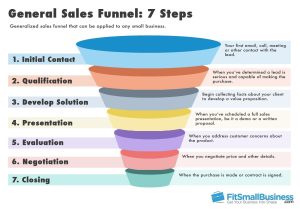
In today’s increasingly digital world, establishing a strong online brand identity is crucial for the success of any business. With the ever-growing competition in the tech industry, it becomes even more important to stand out from the crowd. A well-defined and consistent brand identity can help you attract and retain customers, build trust, and differentiate yourself from your competitors. In this article, we will discuss effective strategies for building a strong online brand identity in the tech niche.
1. Define Your Brand’s Personality
Your brand’s identity is more than just a logo and a catchy tagline. It represents the essence of your business and the values that guide it. Start by defining your brand’s personality – how you want your audience to perceive your company. Are you innovative, reliable, or cutting-edge? Craft a strong brand story that resonates with your target audience’s needs and aspirations.
2. Consistency Across All Online Channels
Consistency is key when it comes to building a strong online brand identity. Make sure your brand’s identity is consistent across all online channels, including your website, social media profiles, and even email communications. Use the same colors, typography, and tone of voice in all your brand assets to create a coherent and recognizable presence. Consistency helps establish trust and allows your audience to easily identify and remember your brand.
3. Create Compelling Visuals
In the tech industry, visual elements can play a significant role in conveying your brand’s identity. Invest in high-quality visuals that align with your brand’s personality and values. This includes designing a visually appealing website, creating eye-catching social media graphics, and using professional product photography. Effective visuals help grab attention, increase engagement, and reinforce your brand’s message.
4. Provide Value through Content Marketing
Content marketing is an essential tool for building a strong online brand identity in the tech niche. Create and share valuable content that demonstrates your expertise and provides value to your audience. Whether it’s blog articles, tutorials, whitepapers, or videos, make sure your content is informative, engaging, and relevant to your target market. By consistently delivering valuable content, you can position your brand as a trusted industry authority.
5. Engage with Your Audience
Building a strong online brand identity involves actively engaging with your audience. Encourage conversations, respond to comments and messages, and ask for feedback. Social media platforms provide an excellent opportunity to interact with your followers, answer their questions, and address their concerns. Actively engaging with your audience shows that you value their input and strengthens the bond between your brand and its customers.
6. Foster User-generated Content
User-generated content (UGC) can significantly contribute to building a strong online brand identity. Encourage your customers to share their experiences and feedback through reviews, testimonials, and social media posts. Showcase UGC on your website and social media profiles to build trust and authenticity. UGC serves as social proof and helps potential customers make informed decisions by seeing the positive experiences of others.
7. Monitor and Adapt
Building a strong online brand identity is an ongoing process. It is crucial to monitor your brand’s online presence and adapt your strategies accordingly. Regularly review your website analytics, social media metrics, and customer feedback to gain insights into your brand’s performance. Use this data to refine your strategies, identify areas for improvement, and stay ahead of your competition.
In conclusion, building a strong online brand identity in the tech niche requires careful planning, consistency, and effective communication. By defining your brand’s personality, maintaining consistency across all online channels, creating compelling visuals, providing value through content marketing, engaging with your audience, fostering user-generated content, and monitoring your brand’s performance, you can establish a powerful online presence that attracts, engages, and retains customers.

